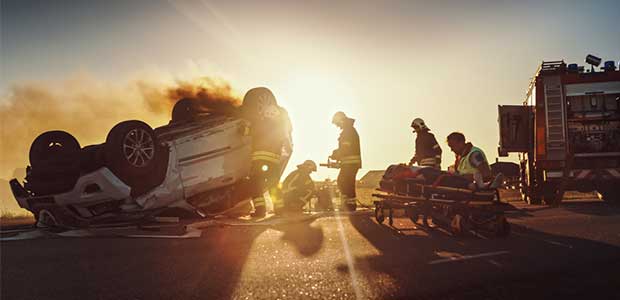
The NSC Preliminary Estimates More Vehicles Return to the Roads Leading to Crashes and Accidents Resulting in Deaths
The first half of 2021 is looking similar to the previous deadly year on the roads.
- By Shereen Hashem
- Sep 09, 2021
The National Safety Council (NSC) released preliminary estimates that show a 16 percent increase in vehicle deaths from the first six months of 2021 as more people began driving around. The upward trend began last year during the onset of the pandemic and negates more than 15 years of progress in preventing deaths on U.S. roads. In the first six months of 2021, the NSC estimated more than 21,400 people lost their lives on the road.
“These figures are not only alarming but devastating as we see once again too many lives lost on the roads,” said Lorraine Martin, NSC president and CEO. “It is up to each and every one of us to do everything we can to be safe and keep each other safe. NSC implores every person to take safe driving practices seriously; they could be the difference between someone living or dying.”
The NSC estimates show, for the end of 2020, that 42,000 people may have died on the roads. This indicated a 24 percent rise in the death rate while the number of miles driven dropped to 13 percent. Through the first six months of 2021, the death rate rose to three percent, revealing that roadways are becoming even more dangerous.
“Our roads are becoming riskier not only each day but each year,” said Mark Chung, NSC vice president, roadway practice. “We need to help each other in making the roads in our communities safer for all users. If you witness unsafe driving behaviors, say something if you are able and possibly save someone from losing their life.”
Preliminary estimates show that some states experienced fewer deaths on the roads while others saw a drastic increase of more than 30 percent. The sates that saw decreases are Maine, Kansas, Alaska, Rhode Island, Connecticut and Wisconsin. According to a press release, the eight states that experienced increases of 30 percent or more include:
• South Dakota (+51 percent, 22 more deaths)
• Oregon (+51 percent, 88 more deaths)
• Minnesota (+41 percent, 61 more deaths)
• Idaho (+39 percent, 30 more deaths)
• Nevada (+38 percent, 50 more deaths)
• Utah (+36 percent, 40 more deaths)
• Vermont (+33 percent, seven more deaths)
• Tennessee (+30 percent,156 more deaths)
NSC calls all Americans to practice the following safety driving behaviors:
1. Drive distraction-free. As CDC data indicates, thousands have died in crashes involving the use of a cell phone. Put it away and #JustDrive.
2. Slow down and move over. Speeding is a factor in more than a quarter of all traffic fatalities. Do not exceed the speed limit and be sure to move over when emergency vehicles, including ambulances, fire trucks/engines, police cars or tow trucks are present.
3. Designate a sober driver. You can also arrange an alternative mode of transportation. Alcohol is only one cause of impaired driving. Drugs, including opioids, cannabis and some over-the-counter medicines, can impair drivers too by causing drowsiness, altering visual functions and affecting mental judgement and motor skills. Do not get behind the wheel of a vehicle if you or someone you know is in this state.
4. Buckle up. Since 1975, seat belts are estimated to have saved 374,276 lives. Buckle up and make sure you have the appropriate car seats installed correctly for children.
5. Check for open recalls. In the United States, more than 50 million vehicles have un-repaired safety recalls, and many of those recalls involve defective parts that can pose serious risks to drivers or passengers.
The NSC and other safety roadway safety advocates called on the Biden Administration to prioritize nominating a leader for the National Highway Traffic Safety Administration, which has not had a confirmed leader since 2017, as well as the Federal Highway Administration. NSC collects fatality data every month from all 50 states and the district of Columbia and uses data from the National Center for Health Statistics, in order for crashes on public and private roads to be included in the estimates. NSC motor vehicle fatality estimates and supplemental estimate information can be found here.